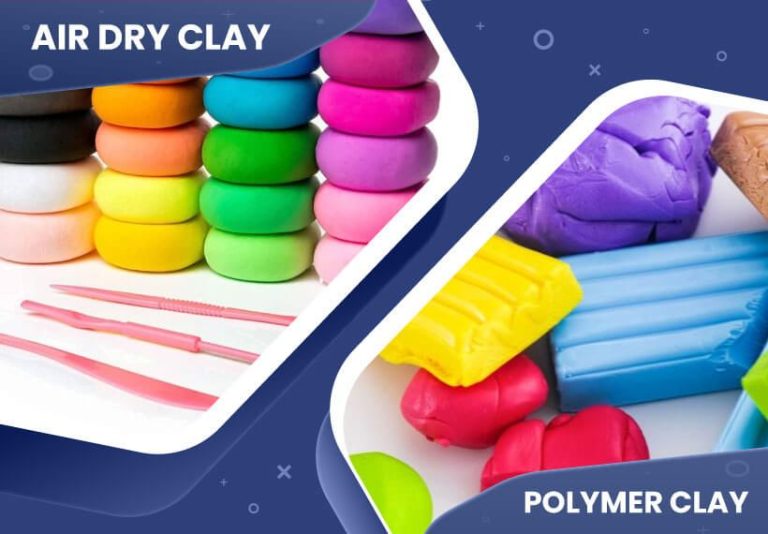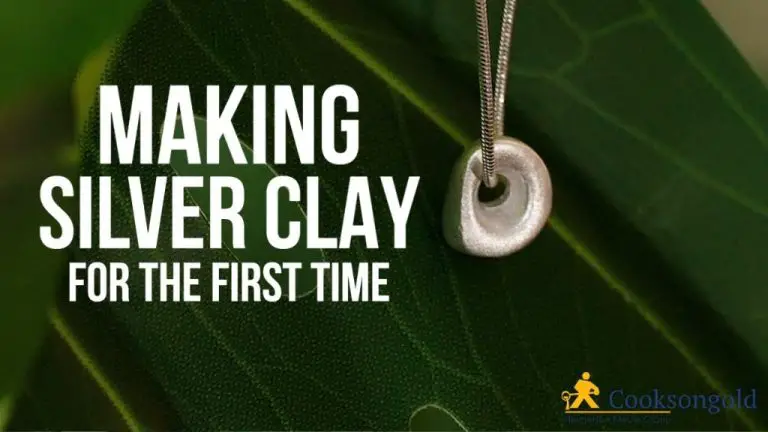How Do You Make Checkered Clay Earrings?
Making your own checkered clay earrings is a fun and creative way to accessorize your look. The process involves gathering simple materials like polymer clay and earring findings, rolling and cutting the clay into checkerboard pieces, shaping and baking them, and then assembling your final earrings. With some practice, you’ll be able to create unique earrings to match any outfit. This guide will walk you through the full process step-by-step, from preparing the clay to enjoying your finished earrings. We’ll cover how to create the checkered pattern, cut uniform earring shapes, add embellishments, and more. By the end, you’ll have the skills to design and make your own customizable checkered clay earrings.
Gather Materials
Making checkered clay earrings starts with gathering the necessary supplies. The key items you’ll need include:
- Oven bake clay – This special modeling clay hardens when baked at a low temperature in your oven. Polymer and Sculpey are two popular brands. You’ll need white and black clay to create the checkerboard pattern.
- Clay tools – These help shape and sculpt the clay. Useful tools include a roller, cutters, and dotting tools. You can find tool sets made specifically for polymer clay.
- Jewelry findings – To turn your clay creations into wearable earrings, you’ll need findings like earring wires, beads or charms, jewelry glue, etc. Choose findings meant for baking clay.
Before starting, read the package instructions for your specific clay brand. Some may require conditioning or special handling. Gather any additional decor items like glitter now so you have everything ready to go!
Prepare the Clay
Before you can create your checkered clay earrings, you need to properly prepare the polymer clay. This involves conditioning, rolling, and slicing the clay into thin sheets.
Start by conditioning the clay. Knead it thoroughly with your hands until it becomes soft and pliable. This helps warm up the clay and makes it easier to manipulate. As you knead, press firmly to work the clay and soften it. Fold and push the clay to mix the colors and compound ingredients evenly throughout.
Next, use a rolling pin to roll out the conditioned clay into a flat, even sheet. You want the sheet to be approximately 1/8 to 1/4 inch thick. Roll slowly and apply firm, but even pressure with the rolling pin. Flip the clay over and roll again to ensure it’s a uniform thickness.
Once rolled out, use a large sharp knife or clay cutter to cut the sheet of clay into rectangles. These will become the front and back pieces for your earrings. Try to cut uniform slices so your earrings will be even in size. These clay slices are now ready to create the checkered pattern.
Create the Checkerboard Pattern
To create the checkerboard pattern for your clay earrings, you’ll want to alternate clay colors in rows. Start by rolling out a base color into a rectangular sheet. Then roll out your alternating color into a sheet of the same dimensions. Place the second sheet on top of the first. Using a tissue blade or craft knife, slice down through both sheets of clay to create long strips. Then slice perpendicular to create small squares.
Gently smooth the two colors together, making sure they are firmly joined. You may need to rearrange some of the squares to create a neat checkerboard with alternating colors in each row and column. Work slowly and carefully to avoid distorting the pattern. Keep smoothing until the clay sheets are perfectly fused together in a clean checkerboard pattern. Now you have a ready-made sheet of checkered clay for cutting your earring shapes!
Cut and Shape the Earrings
Once you have created your checkerboard clay sheets, it’s time to cut and shape them into earrings. The most important tool for this step is clay cutters. Clay cutters allow you to cut uniform and professional looking shapes out of the clay.
Some common clay cutter shapes for earrings include circles, squares, rectangles, ovals, hearts, stars, and more. Choose cutter shapes that complement the checkerboard design. Circles or ovals often work well.
Press the cutters firmly into the clay to cut out your earring shapes. Make sure the edges are clean and smooth. You can make multiple earrings by cutting out pairs.
In addition to cutters, you can also hand sculpt the clay into customized earring shapes. Roll balls or teardrops between your fingers. Or, hand shape squares, triangles, hearts, or any shape you’d like. Get creative with the shapes!
Make sure the earrings are the proper thickness and size for pierced ears. They should not be too heavy or large. Earring pairs should be uniform in size and shape.
Add Embellishments
Now that you have the basic earring shapes, it’s time to add some fun embellishments to make them unique. There are lots of options when it comes to decorating polymer clay.
One easy technique is to use rubber stamps and clay embossing tools to imprint patterns onto the surface of the clay. Geometric shapes, vines, leaves, flowers and more make great stamp designs. Press the stamp firmly into the raw clay to get a clear impression. Clay embossing tools can also be used freehand to carve lines and textures.
Applying beads, charms and jewelry findings is another way to embellish clay earrings. Use liquid polymer clay to attach beads and charms securely. Simply put a small dot of liquid clay where you want the decoration placed and press the item into it. Bake any additions at the same time as the earrings to fuse them together.
Get creative with the embellishments! Layer patterns, add sprinkles of glitter or pigments, or encase small images between two layers of clay. The options are endless for making your polymer clay earrings truly unique.
Attach Findings
Once your earring shapes are cut out and baked, it’s time to attach findings so they can be worn. There are several options for earring findings:
– Eye pins: These are pins with a loop on one end that you slide through the hole in your clay. You can then attach a jump ring and earring post or hook.
– Earring posts: These have a pointed post on one end that gets inserted through your clay and a butterfly back that holds it in place on the ear.
– French hooks: These are wire hooks that get inserted through the clay and don’t require a back since the hook loops to secure it.
– Kidney wires: Like french hooks, these are also shaped in a hook design with a closing mechanism to secure on the ear.
For checkered clay earrings, eye pins or posts work best. Slide the eye pin through the top of the earring and use pliers to bend a simple loop. Open a jump ring and attach it to the eye pin, then close it. Attach an earring post or hook to the jump ring. For post earrings, insert the post through the top of the clay and screw on the butterfly back.
Once your findings are attached, your checkered clay earrings are complete! Be sure to sign your creations on the back.
Bake the Clay
Once your earrings are fully assembled, it’s time to bake the clay according to the manufacturer’s instructions. Every clay brand is a little different, but generally you’ll want to bake polymer clay earrings at 275°F – 300°F for 15-30 minutes. Use an oven thermometer to ensure your oven is at the proper baking temperature.
Place your earrings on a baking sheet lined with parchment paper or aluminum foil. Bake them toward the center of the oven, away from the heating elements, where the temperature is most consistent. Check on them periodically to ensure they don’t burn.
When fully cured, the clay will be hardened and have a slight sheen. Carefully remove the earrings from the oven and allow them to cool completely before handling. A slow cooling process prevents cracks and breakage. Once cooled, you can add a clear glaze or leave them with a matte finish.
Finish the Earrings
Once the clay earrings are baked and cooled, they will need some finishing touches. This includes sanding, sealing, and polishing to smooth any rough edges and give them a nice sheen.
Start by gently sanding the surface of the baked clay with fine grit sandpaper. This will smooth out any ridges or imperfections. Be careful not to sand too much or you may remove some of the checkerboard pattern.
Next, seal the earrings with a thin layer of glaze, polish, or acrylic sealer. This will add moisture protection and give the earrings a glossy finished look. Apply 2-3 thin coats allowing each coat to fully dry before adding the next.
Finally, buff the earrings with a polishing cloth or very fine grit sandpaper to really make them shine. Rub the surface in circular motions. You’ll be left with smooth, glossy checkered clay earrings ready to show off!
Enjoy Your Creations!
After all that hard work, it’s time to enjoy the fruits of your labor. Here are some tips for getting the most out of your new clay checkered earrings:
Display Them Proudly: Find a special place to display your earrings, like a jewelry stand or catch-all dish on your dresser. Seeing your handmade creations will brighten your day.
Give Them as Gifts: Clay earrings make heartfelt homemade gifts for friends and family. Include a handwritten note explaining how you made them yourself.
Sell Online or Locally: You can also sell your earrings online on Etsy or at local craft fairs. Pricing handmade jewelry can be tricky – make sure to factor in materials, time and your unique creative contribution.
Take Pride in Your Work: Wearing your own handmade earrings is a great confidence boost. It feels good to show off your skills and get compliments on your designs.
However you choose to enjoy your clay checkered earrings, have fun showing off your creativity!


